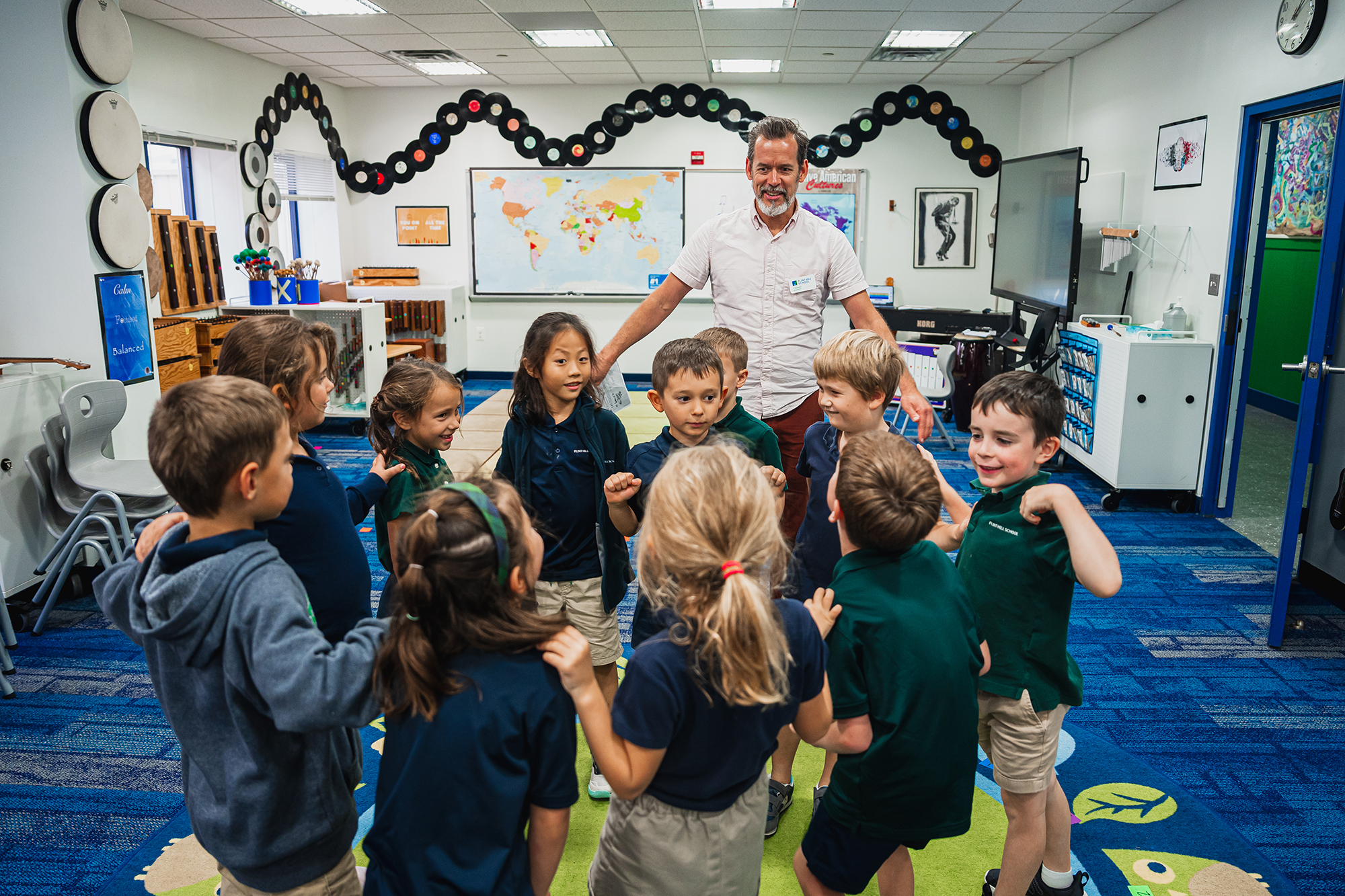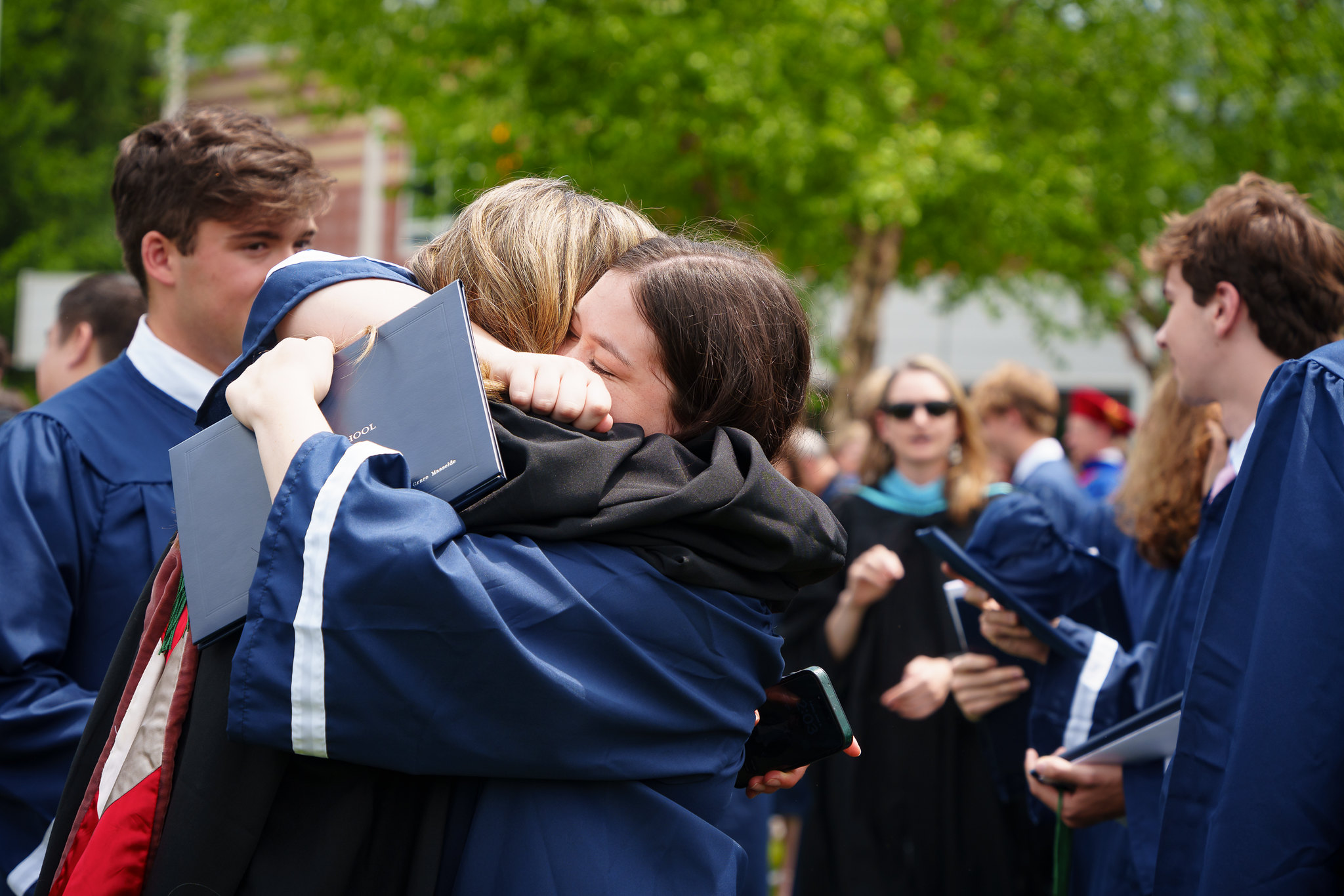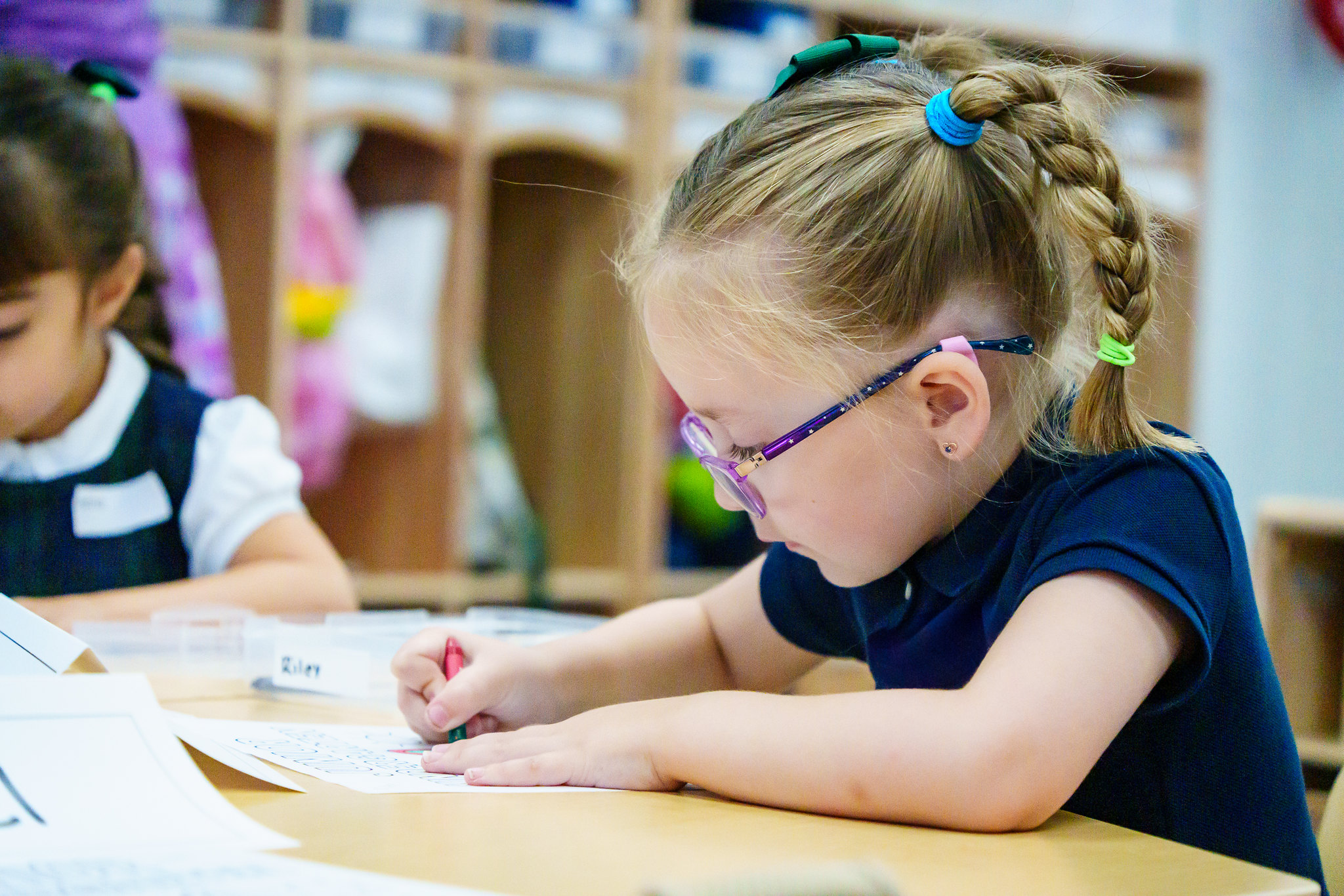HUSKY HIGHLIGHTS

September 18, 2025
By Nikki Rigores-Gilfus, Lower School Teacher
The Power of Responsive Classroom: Consistent Application & Schoolwide Training
As parents, you're looking for a place where your child will not only excel academically but also feel safe, supported, and seen. Here at Flint Hill’s Lower School, we believe that a child's social and emotional well-being is foundational to their academic achievements. That's why we've adopted the Responsive Classroom approach to teaching and learning throughout our Lower School, creating an environment where every student can flourish.
What Is Responsive Classroom?
Responsive Classroom (RC) is a widely respected, research-backed approach that focuses on integrating academic and social-emotional learning. While many elementary schools use some aspects of RC, Flint Hill is different. Our Lower School faculty is extensively trained in this method, ensuring a consistent and supportive environment for all students.
This training is all about fostering a safe, joyful, and engaging classroom where children feel empowered to take risks, learn from their mistakes, and develop a lifelong love of learning.
The Power of Morning Meeting
Every day in every Lower School class kicks off with a Morning Meeting. This isn't just a casual gathering; it's a carefully structured time that sets a positive tone for the entire day. Students gather on the carpet to:
- Greet Each Other: Children learn to greet their classmates in fun, interactive ways, sometimes even in different languages, fostering a sense of connection and belonging.
- Read a Morning Message: This message outlines the day's schedule, providing predictability and helping students understand what to expect.
- Share: Students have opportunities to share personal stories and feelings. This helps them practice speaking in front of a group and, crucially, develop active listening skills — making eye contact, responding thoughtfully, and engaging with their peers.
- Engage in a Collaborative Activity: A short, community-building activity helps students interact, get to know each other better, and build teamwork skills.
Hopes, Dreams, and Classroom Rules
The school year begins with Hopes and Dreams conferences with parents, where we discuss aspirations for each child's journey through the school year. Following this, students collectively articulate their own hopes and dreams for the year. This naturally transitions into the collaborative creation of classroom rules. Instead of rules being imposed, students reflect on what behaviors and agreements are necessary to achieve their shared goals. This might include commitments like:
- Treating each other with kindness.
- Looking and listening attentively.
- Using safe and calm bodies.
- Telling the truth.
- Having fun while learning and playing.
By co-creating these rules, students take ownership, leading to a more harmonious and respectful learning environment.
Fostering Ownership Through Academic Choice
Another cornerstone of Responsive Classroom is academic choice. This principle recognizes that when students have a say in their learning, they become more invested and engaged. For example, during a unit on animals, students might choose a specific animal they want to research, using both nonfiction books and digital resources. In a math workshop, students might select from various games to practice a particular skill, such as different activities for addition fact fluency. This choice empowers students, allowing them to explore their interests, take pride in their work, and deepen their understanding.
In our Lower School, Responsive Classroom isn't just a program; it's woven into the fabric of our daily interactions and teaching. It's how we ensure that our students not only succeed academically but also develop into compassionate, confident, and engaged members of our community.
Nikki Rigores-Gilfus is a 2nd grade teacher at Flint Hill School. She earned a B.S. from Southern Connecticut State University and an M.Ed. from Marymount University.
LEARN MORE ABOUT FLINT HILL
Fill out the form to receive updates from our team.
RECOMMENDED FOR YOU
For students, a sense of connection with others and belonging to a community benefits every aspect of their health, improves family relationships, reduces risk-taking behaviors,...
What may look like play is, in fact, a period of remarkable cognitive growth.
You don’t need to become a teacher — you just need to nurture curiosity and independence. Here are a few simple and meaningful ways to...
It’s one of the most common questions parents ask us: Is my child ready for kindergarten? If you’ve found yourself anxiously wondering whether your child...






